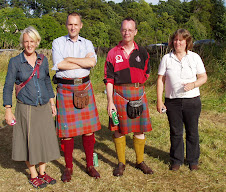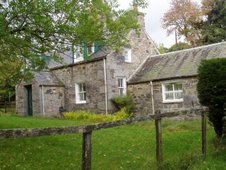To Strathardle today. I should be back by Ash Wednesday.
Thank you for the help with my potatoes – especially from the Fishwife. Where do you get that much cardboard?
Much to say on that subject, and on the VKB front, but today’s bulletin is concerned with the American Vogue Knitting Book which Mary Lou sent me. It arrived yesterday – spring, 1960. I am used to translating the numbers of British VKB’s into dates; I had a real mental struggle to translate that date into a number. It’s easy, really, and the answer is no. 56.
Well.
The two magazines are very different, different sizes, different layouts. The British one offers “over 25 new designs”; the American, “50 colorful new designs”, so I think we can assume that the contents are not identical.
However, many of the patterns are the same, with identical photographs, although perhaps differently cropped. There has clearly been a lot of editing going on. I will take both magazines to Strathardle today to pursue the question of whether all the British patterns are in the American magazine. I will probably be capable of no more than dozing by the fire.
I started with this one. This is part of the picture as it appears in the American magazine, and I didn’t notice until I scanned it that the model is sitting in a right-hand drive car. I had already concluded on other grounds that the pattern was probably American:
Thank you for the help with my potatoes – especially from the Fishwife. Where do you get that much cardboard?
Much to say on that subject, and on the VKB front, but today’s bulletin is concerned with the American Vogue Knitting Book which Mary Lou sent me. It arrived yesterday – spring, 1960. I am used to translating the numbers of British VKB’s into dates; I had a real mental struggle to translate that date into a number. It’s easy, really, and the answer is no. 56.
Well.
The two magazines are very different, different sizes, different layouts. The British one offers “over 25 new designs”; the American, “50 colorful new designs”, so I think we can assume that the contents are not identical.
However, many of the patterns are the same, with identical photographs, although perhaps differently cropped. There has clearly been a lot of editing going on. I will take both magazines to Strathardle today to pursue the question of whether all the British patterns are in the American magazine. I will probably be capable of no more than dozing by the fire.
I started with this one. This is part of the picture as it appears in the American magazine, and I didn’t notice until I scanned it that the model is sitting in a right-hand drive car. I had already concluded on other grounds that the pattern was probably American:

I compared the patterns. They are not identical. US: Coats & Clark’s Red Heart Super Fingering 3 ply, gauge 7 sts to 1". GB: Munrospun Evening Dusk 4-ply, gauge 15 sts to 2". The British pattern offers a choice of sleeve-length, the American one doesn’t.
GB (for the smallest size, 32-in bust): “cast on 116, Work 1 ½", ending with a k. row. K. into back of each st. in next row to mark hemline. Change to [larger] needles. Work 24 rows. Inc. 1 each end of next and every 12th row until there are 132 sts.”
USA (for size 10, otherwise undefined): “cast on 119 sts. Work in stockinette st. Work even for 1", ending with a k. row. K. 1 row on wrong side (hemline). Change to [larger] needles and continue in stockinette st. Work even until 12 ½". [then shape armholes]”.
And so forth. Small differences, but there they are. The American design is finished with bias binding in a contrast colour at neck and sleeves. The British one is not – and when one looks closely at the photographs, one can indeed see that the British one has been altered to eliminate the contrast. (Or vice versa, of course, but I am now convinced that this pattern, at least, is of American origin.)
There must be women still alive who remember how this editing was done. It would be fascinating to hear the story. If the whole thing was re-knit in Britain, why not re-photographed?
For the shock of it all last night was this ineluctible conclusion: the picture in one magazine or the other is a lie: the sweater shown was not knit in the yarn specified, nor to quite the pattern supplied. Next, you’ll be telling me there is no Santa Claus.




The beds I use are four feet wide by about 16 feet long, and I usually plant up two or three beds.So most packing cases for fridges, tellys etc are suitable once staples and tape are removed. You just overlap the opened out boxes. Also there is a big cage just inside the Ikea loading bays, where folk dump their unwanted boxes so they can fit quarts of Ikea goodies into the pint pots of their cars.
ReplyDeleteJean We'll be expecting you to have your own Vogue Knitting Book monogram as modeled in the sweater.
ReplyDeleteRephotographing would have cost much more: photographers' fees, models' fees, etc. Retouching involved a sort of handpainting or etching of the negative (or an intermediate print) to add or subtract detail. Before my time, actually, but I've heard about it from old hands, so I can give you the broad outline.
ReplyDelete--Gretchen
The idea of the bias binding is intriguing me - don't remember ever seeing this. I know some knitters dislike any "unkitterly" suggestions of this sort of mixing, but I'm intrigued. Do wonder, though, about possible different shrinkage and how one would allow for it.
ReplyDelete- Beth
forget about the monogram ... LOL ... look at that waist!!
ReplyDeleteWow. I wouldn't have expected so many differences between the magazines. But I expect back then the same yarns weren't available on both sides of the Atlantic. Today that is no great issue. What surprised me most was the difference in the number of patterns in each issue.
ReplyDeleteThe British pattern gives more detailed instructions, requires more shaping, and uses finer yarn. Wouldn't it be easier to add a dark line to indicate an edging than to remove one? Still, the right-hand drive vehicle is strong evidence. I'll take your word for it since I can't tell from the picture.
ReplyDeleteI love comparing things... lately I'm comparing patterns for the Channel Island guernsey. There are slight differences in the published versions that I've found.